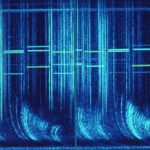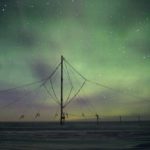QEPPA
Quantifying energetic particle precipitation into the atmosphere (QEPPA)
- Start date
- 17 August, 2012
- End date
- 16 August, 2015
QEPPA is a joint project between the British Antarctic Survey and the Space physics group at Lancaster University. The objective of QEPPA is to work out the amount of charged particles that hit our atmosphere during space weather events in order to improve how our models represent this effect on our atmosphere and climate.
Energetic charged particles, such as electrons, travel along the Earth’s magnetic field and hit our atmosphere. A visible sign of this that most people are aware of is the Aurora (Borealis in the north, Australis in the south). An effect that we cannot see is that the electrons alter the ion-chemistry of the upper and middle atmosphere, generating ozone destroying chemicals that can change the heat balance of the polar atmosphere.
Space weather events tend to lead to more electrons hitting the atmosphere and so there is a link between solar activity and the variation of the polar climate. This effect is represented in some global atmospheric climate models; however there is a problem in getting a good estimate of the global amount of electrons that hit the atmosphere.
QEPPA will combine data from two inter-hemispheric ground-based arrays to provide global pictures of the electrons entering our atmosphere and so determine the significance of energetic electron precipitation to atmospheric chemistry and dynamics. These global pictures will be used as inputs for coupled-climate models to provide a better estimate of the amount of ozone-destroying chemicals are produced during space weather events than is currently available.
- Quantify the energetic charged particle precipitation entering the atmosphere by characterising electron precipitation spectra during substorms
- Develop a Level-2 data product of electron precipitation variation in latitude/longitude and time. This will be a valuable input for coupled-climate models and will be available in near real-time.
- Use the data product to determine the production of odd nitrogen as a function of geomagnetic activity and to answer: How does the NOx profile vary during substorms and storms?
- Use the data product to compare NOx production morphology in each hemisphere in order to answer: How does NOx production vary between hemispheres?



